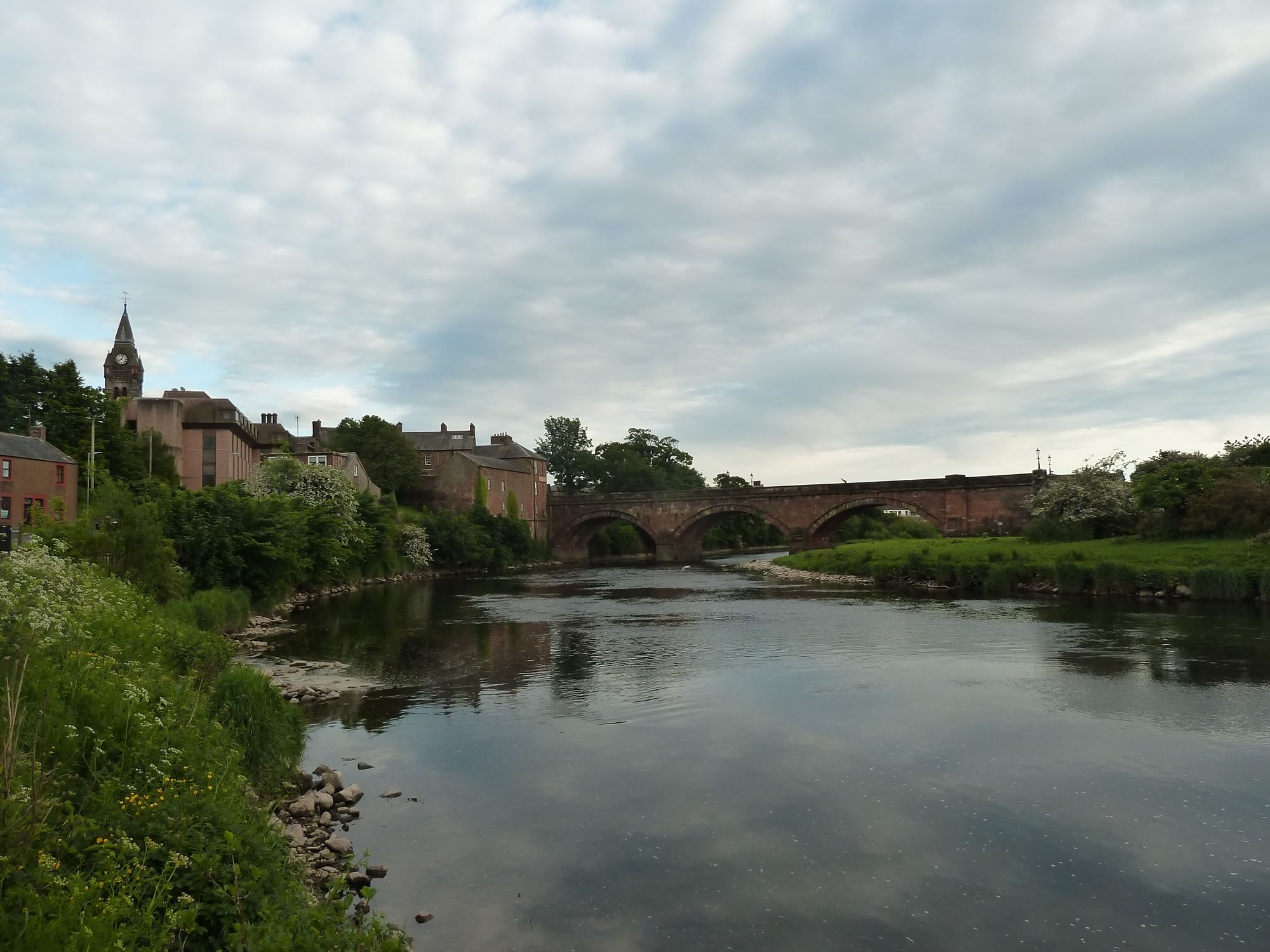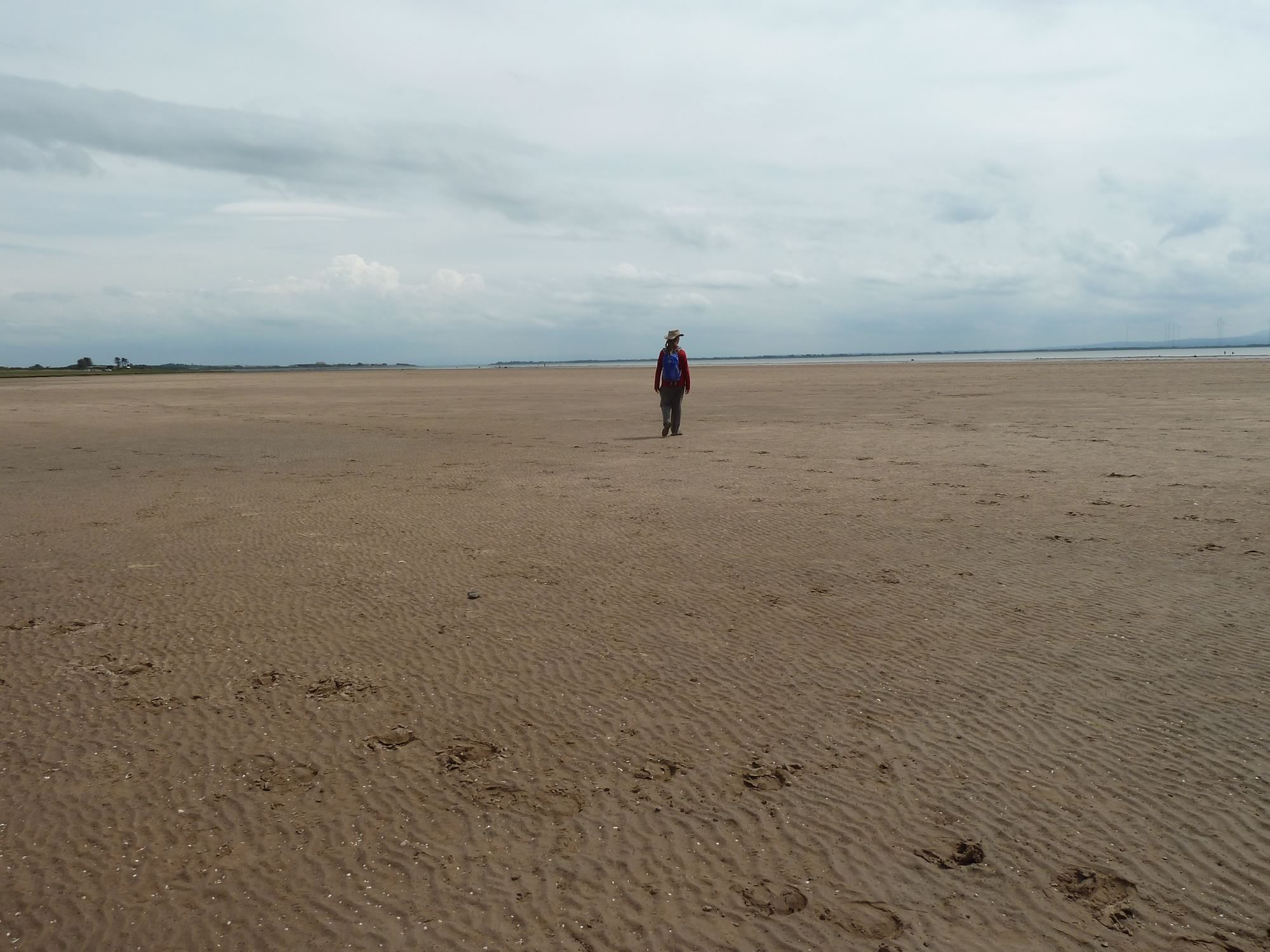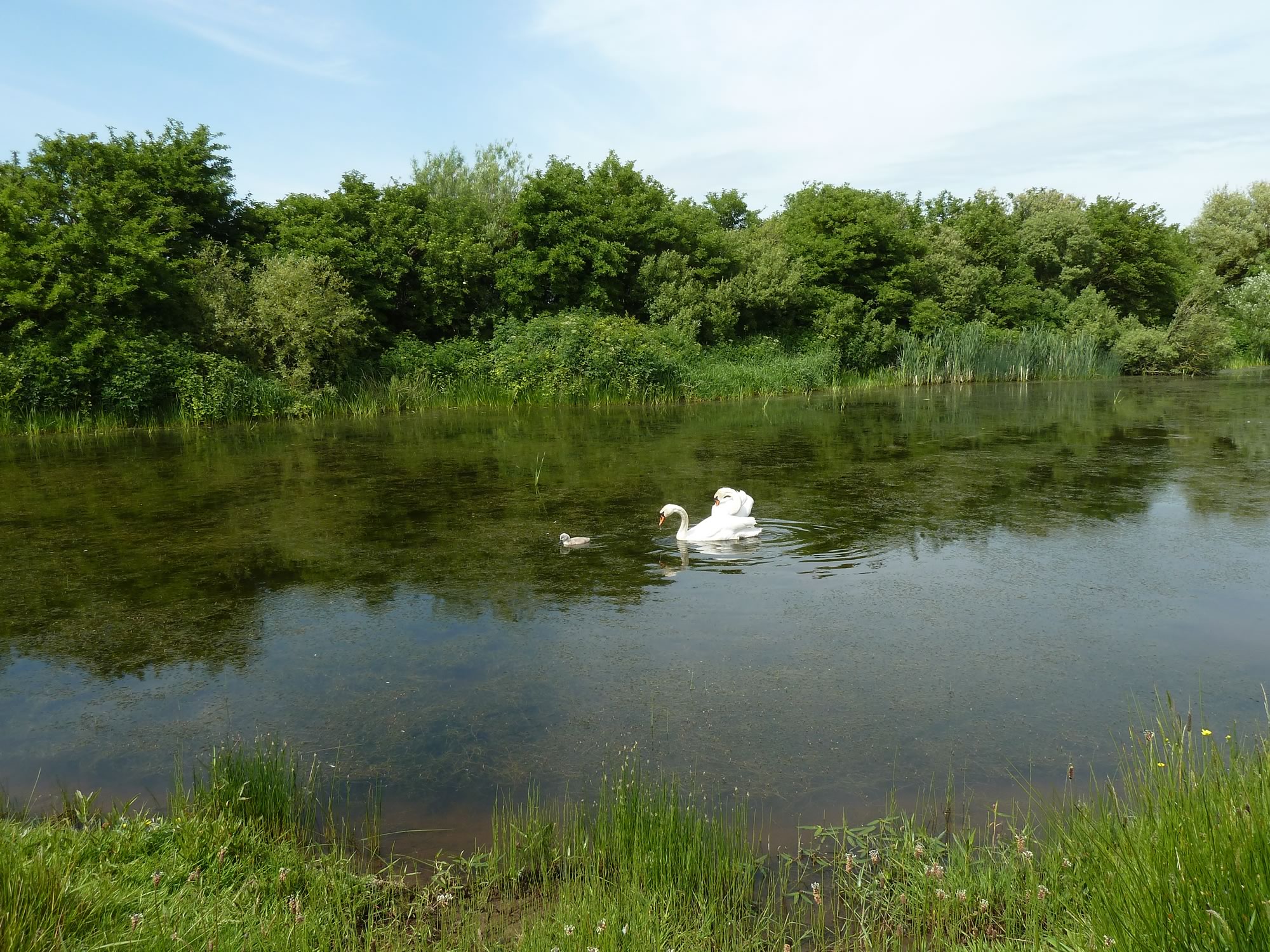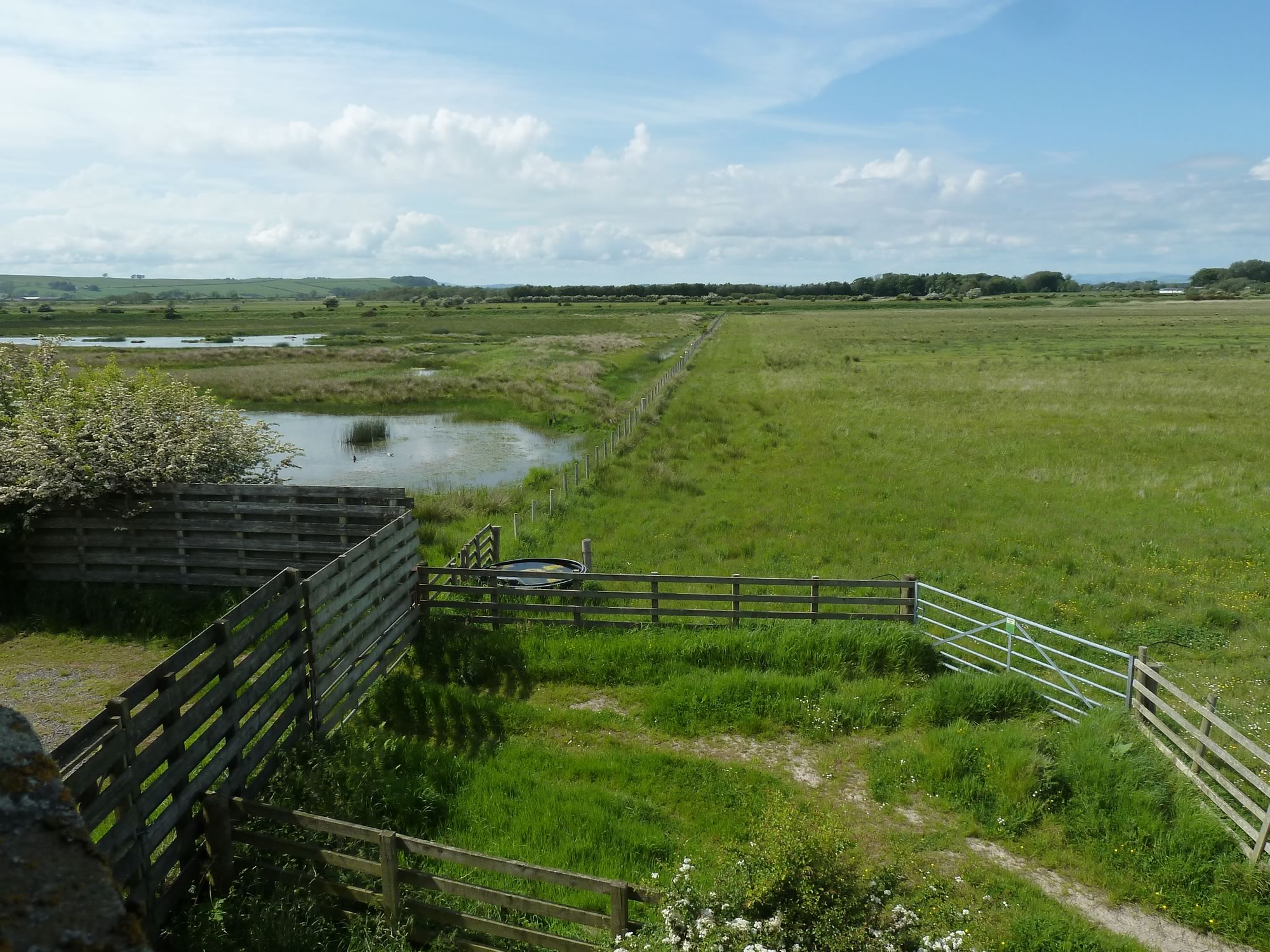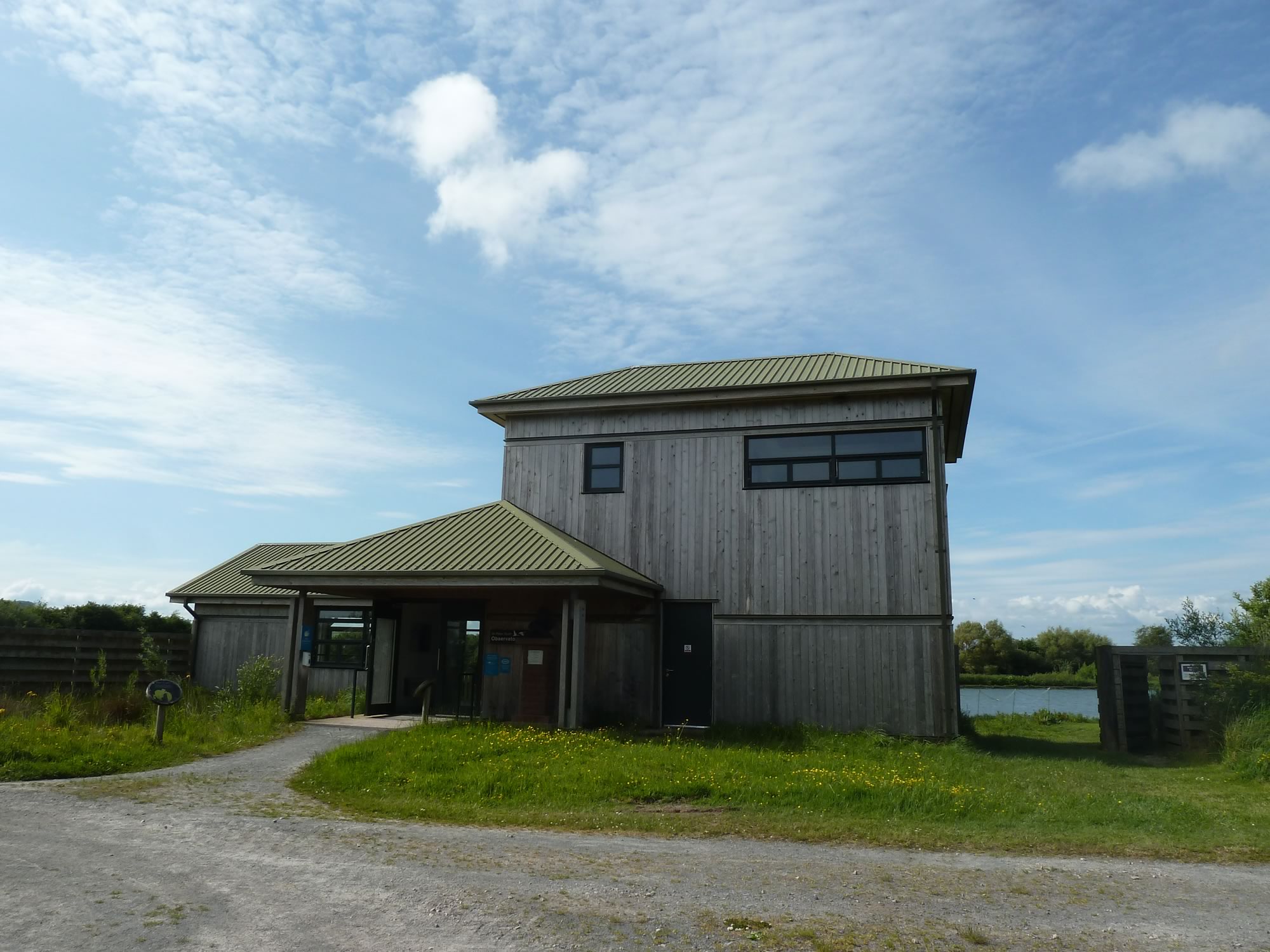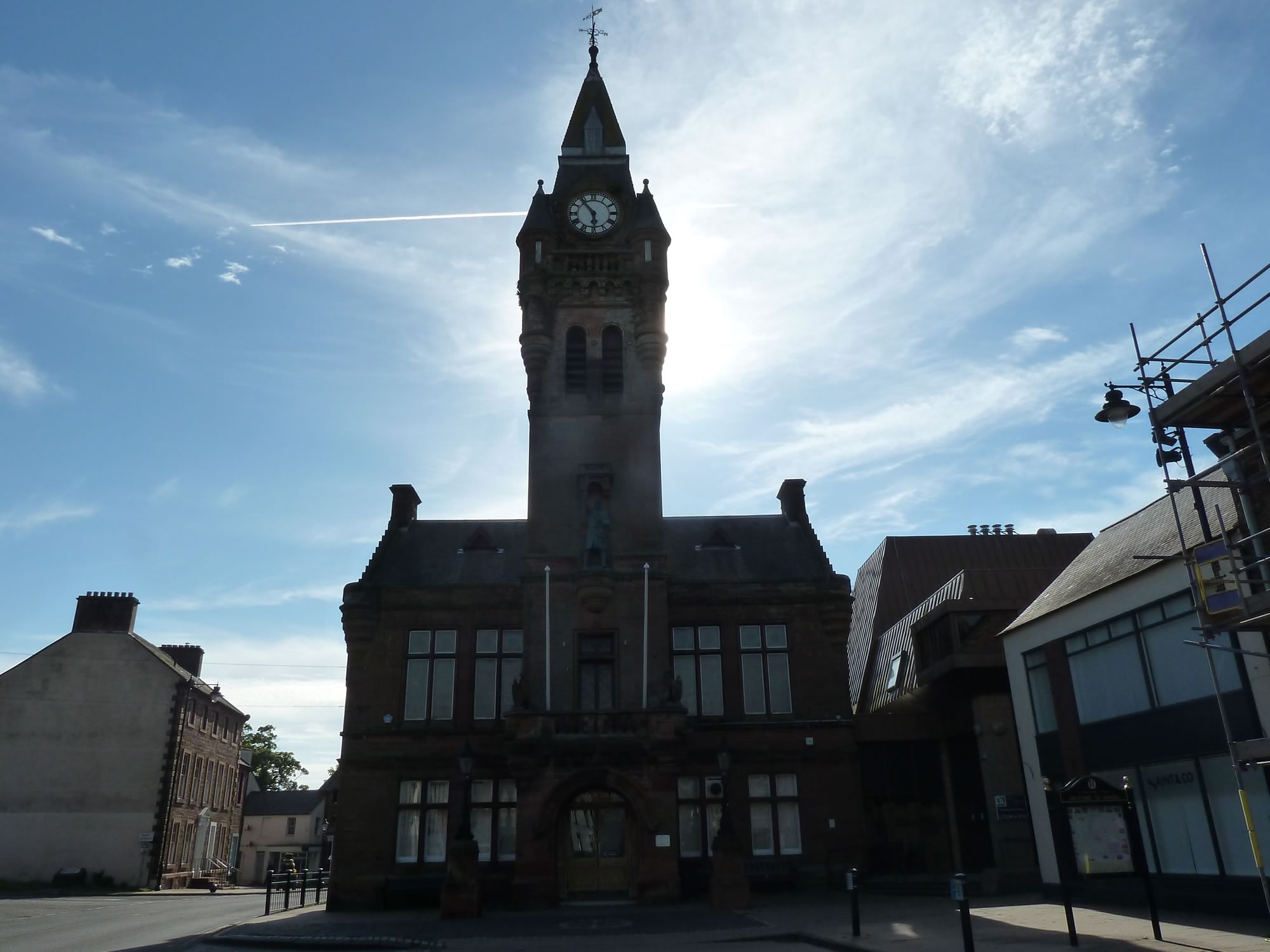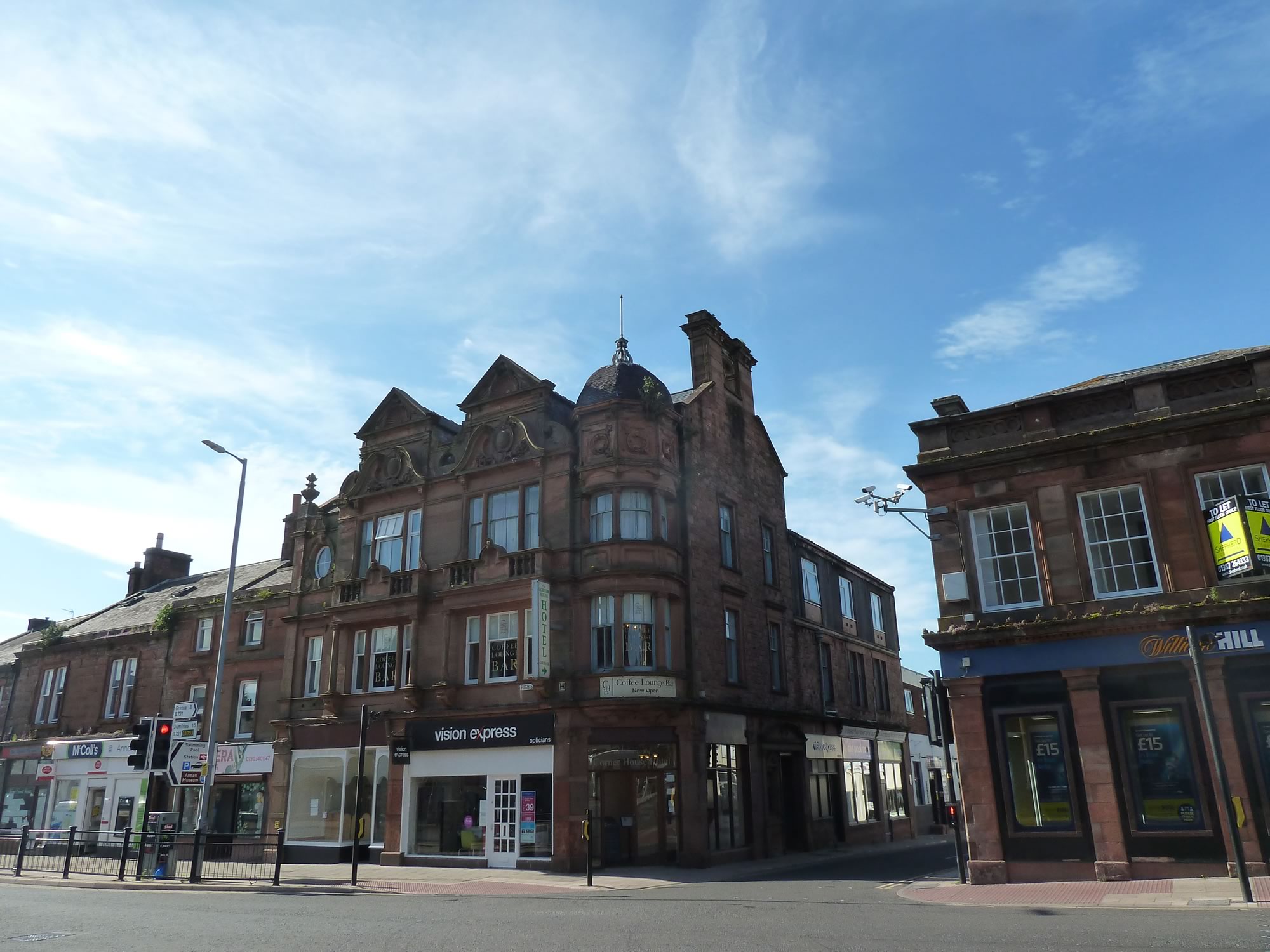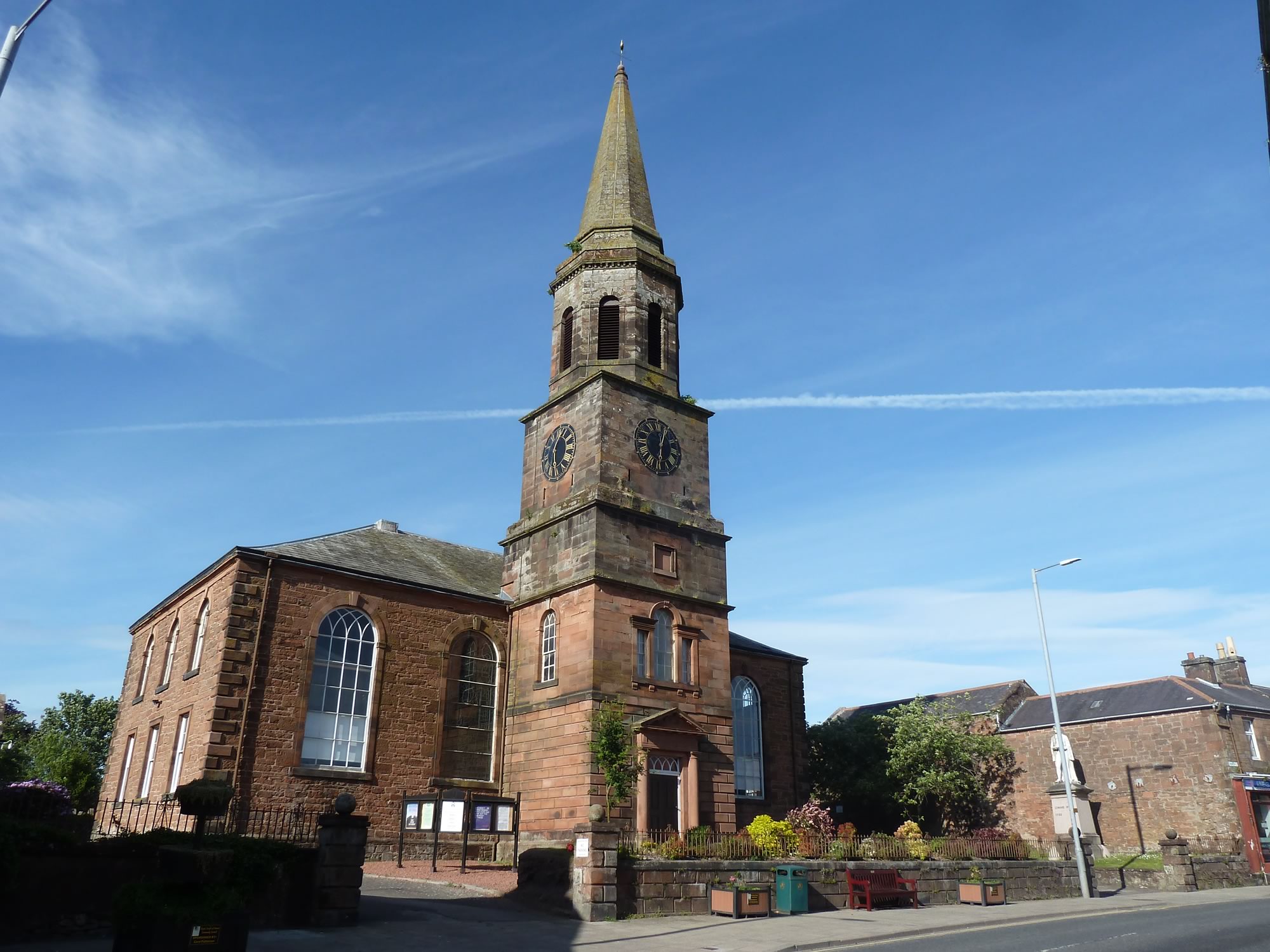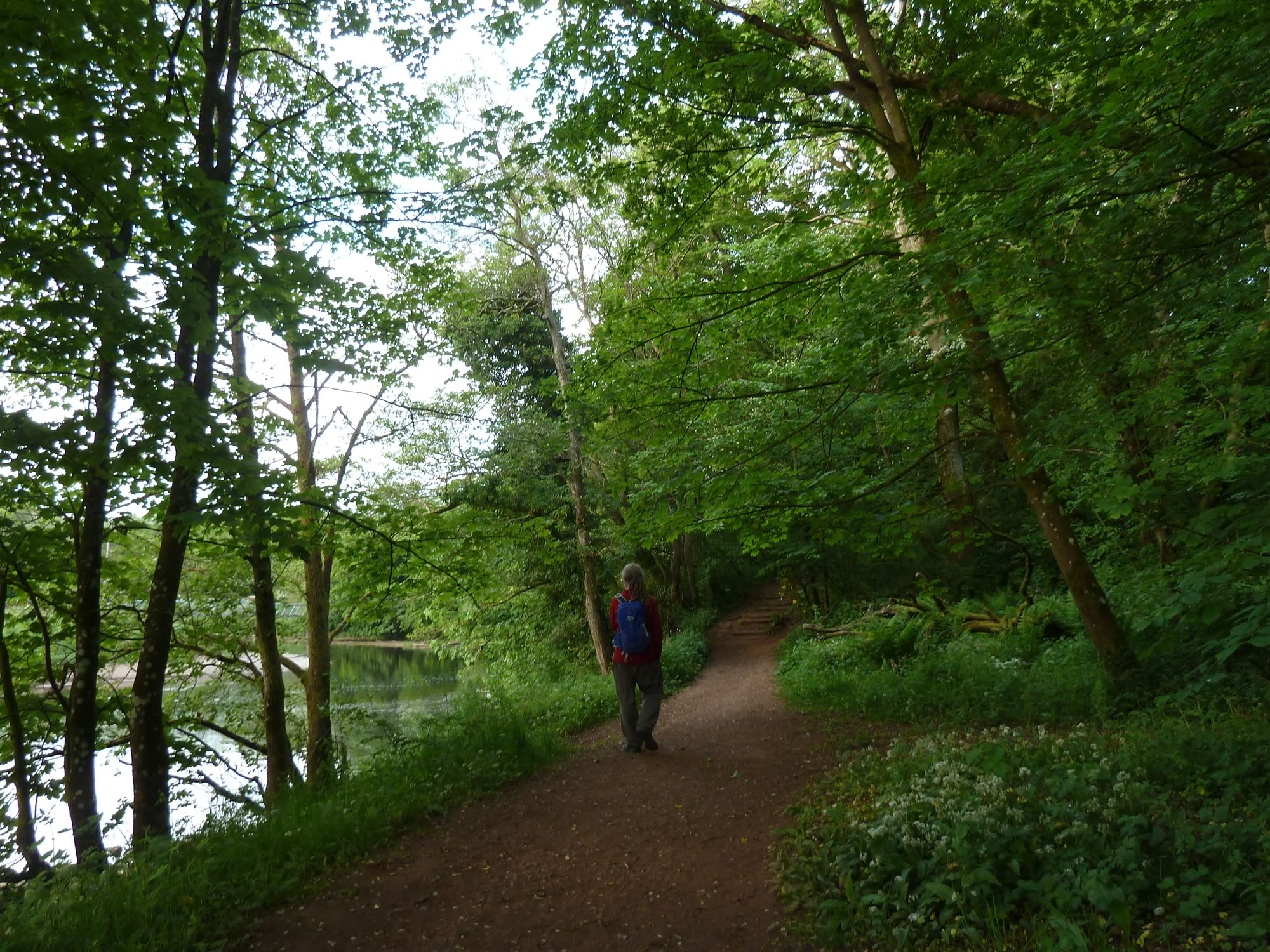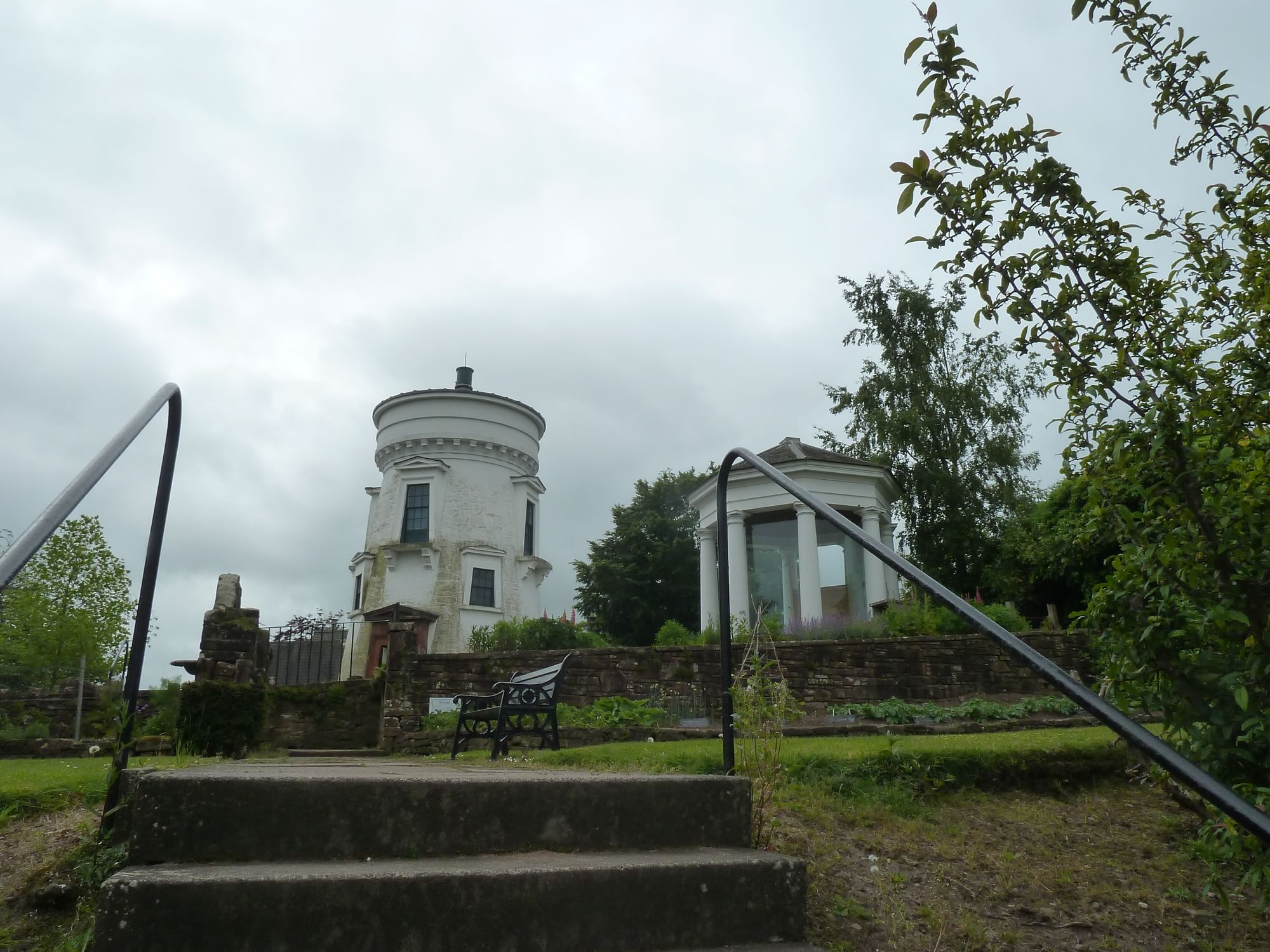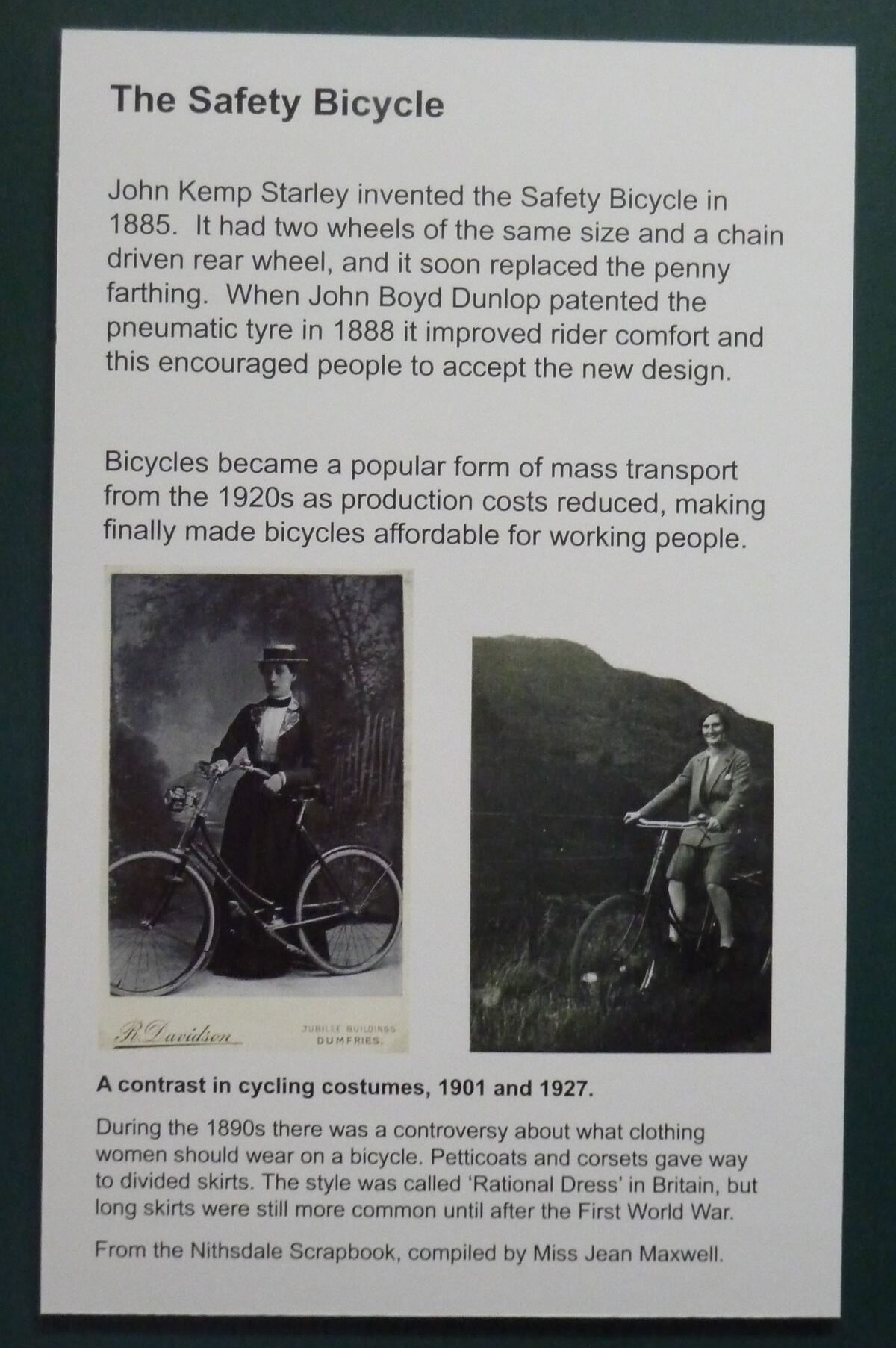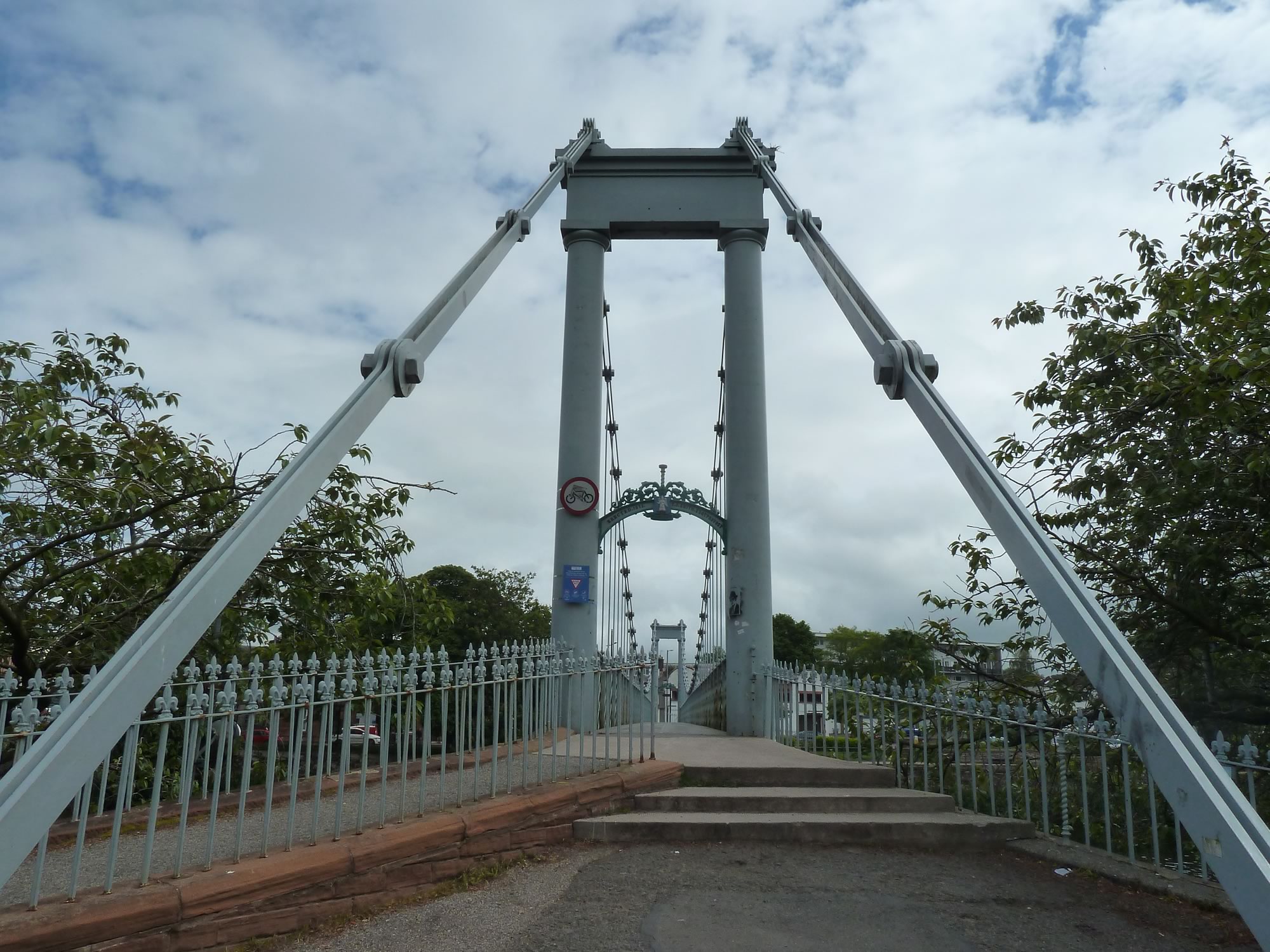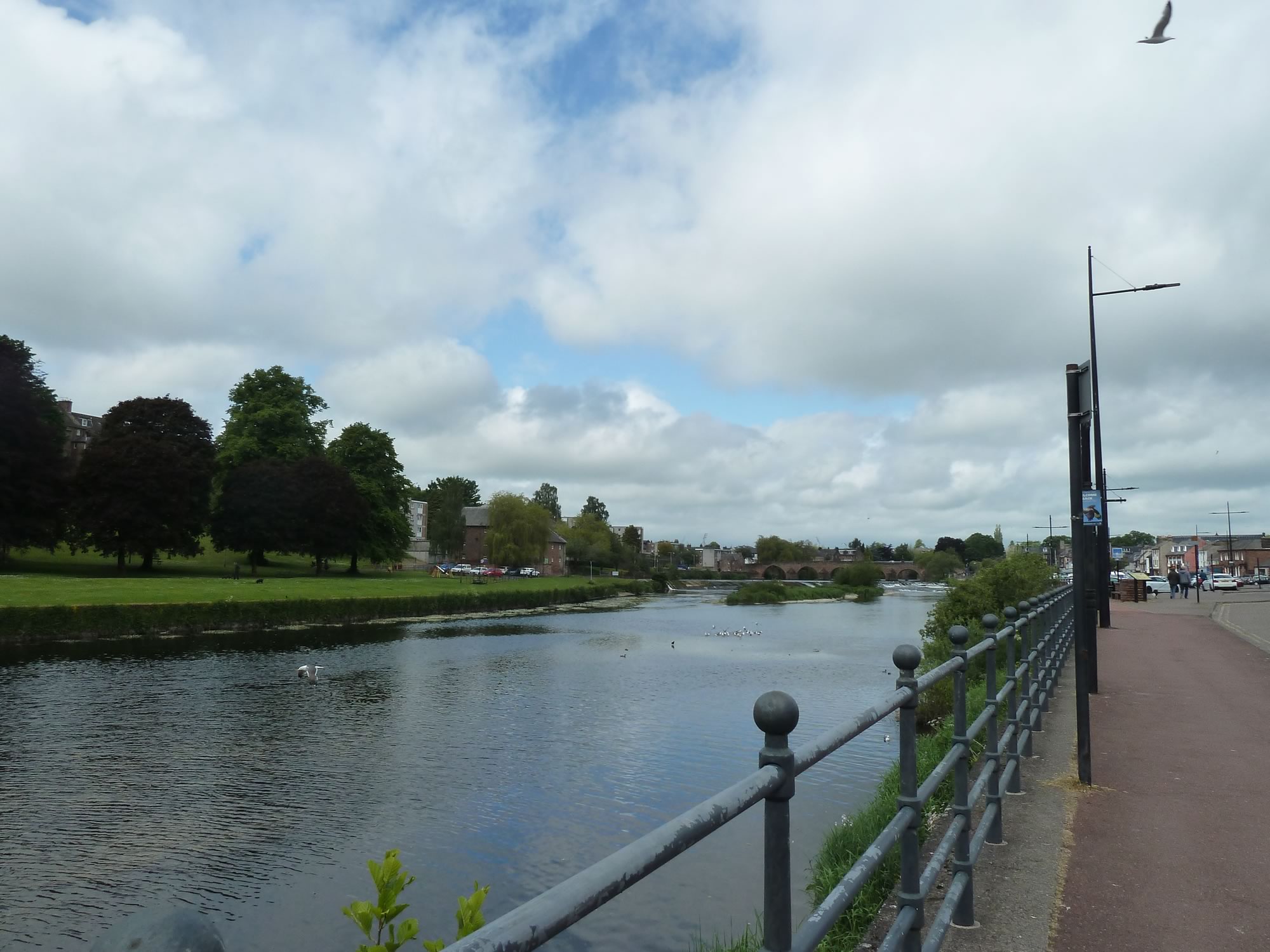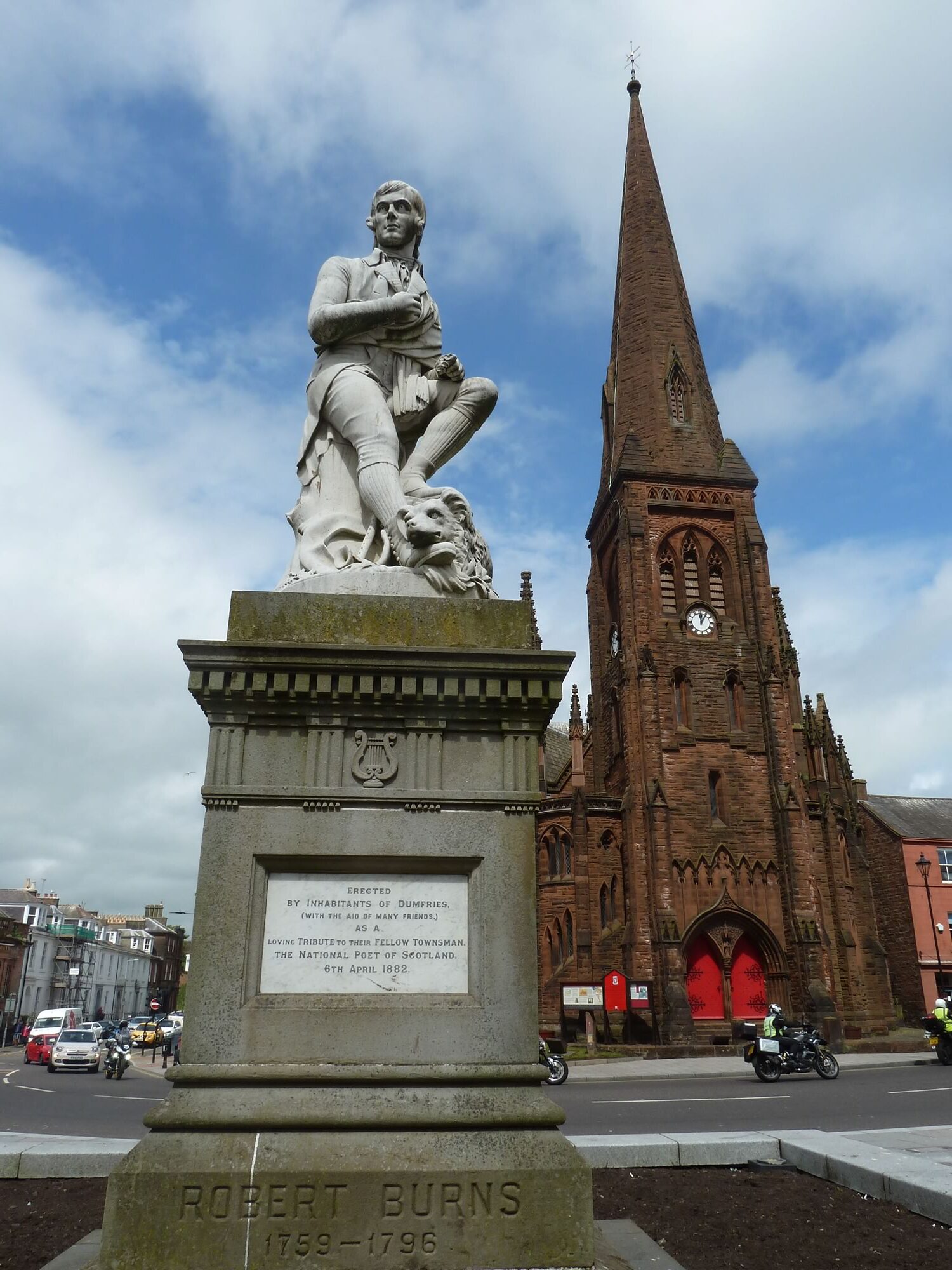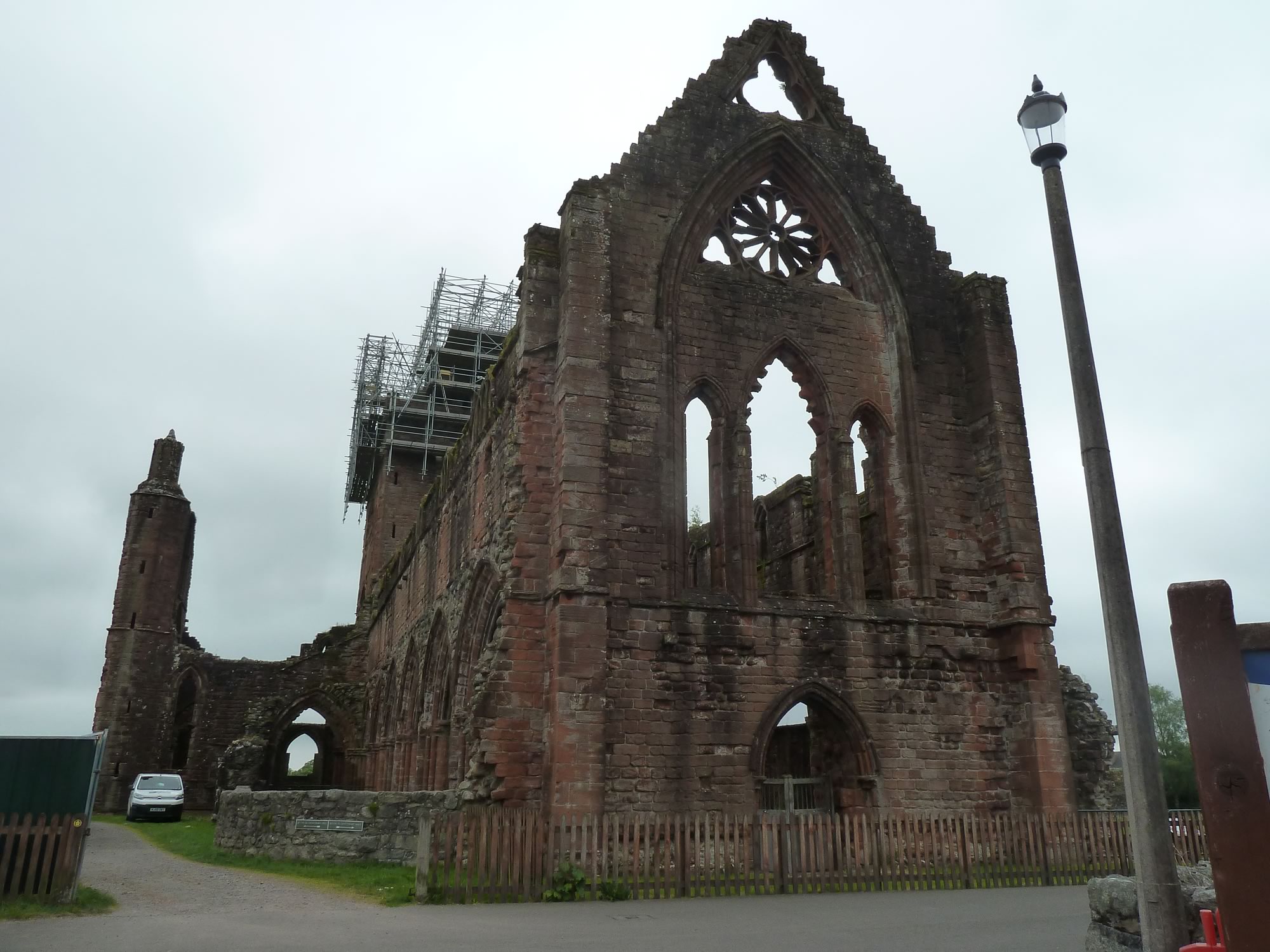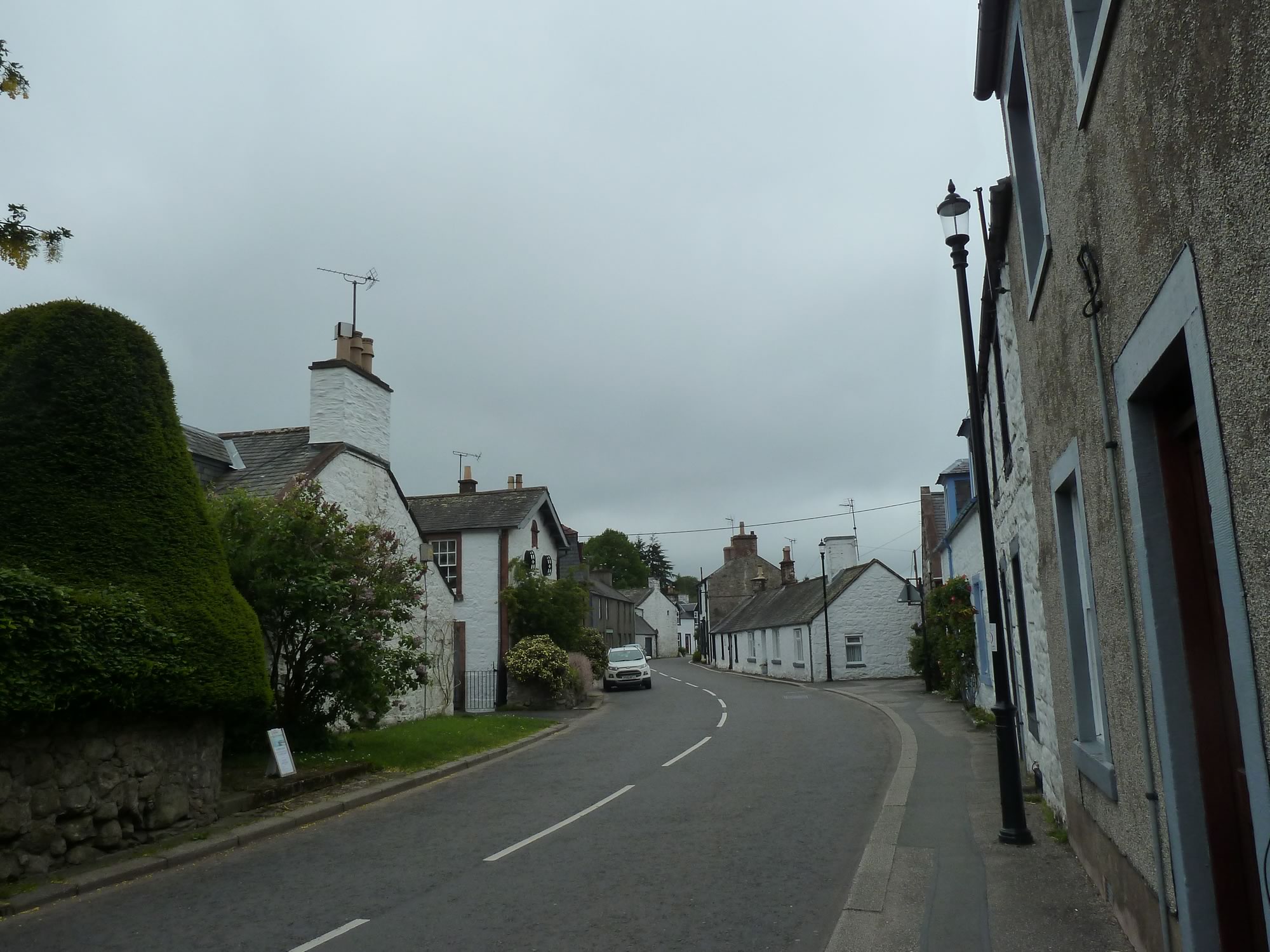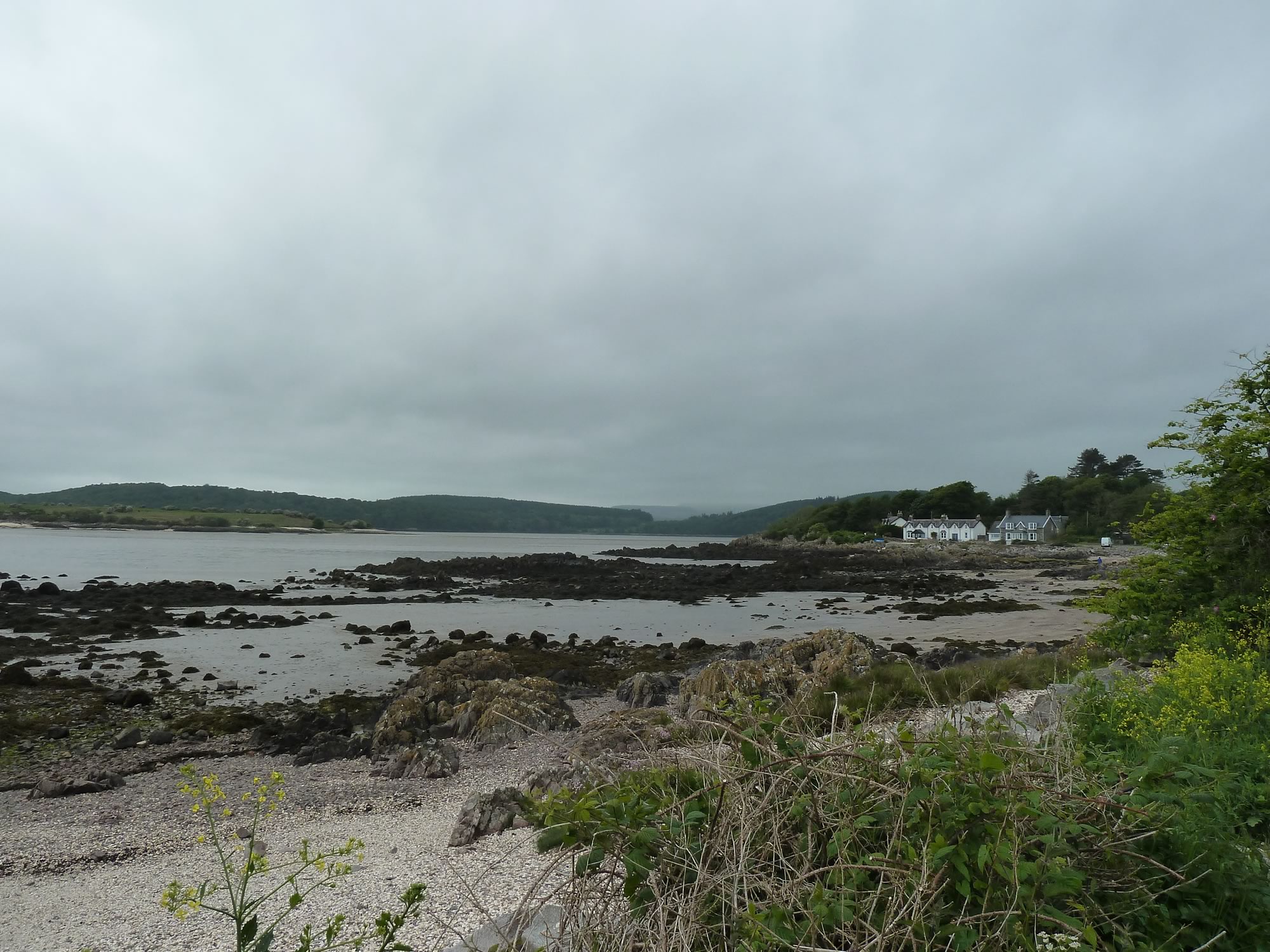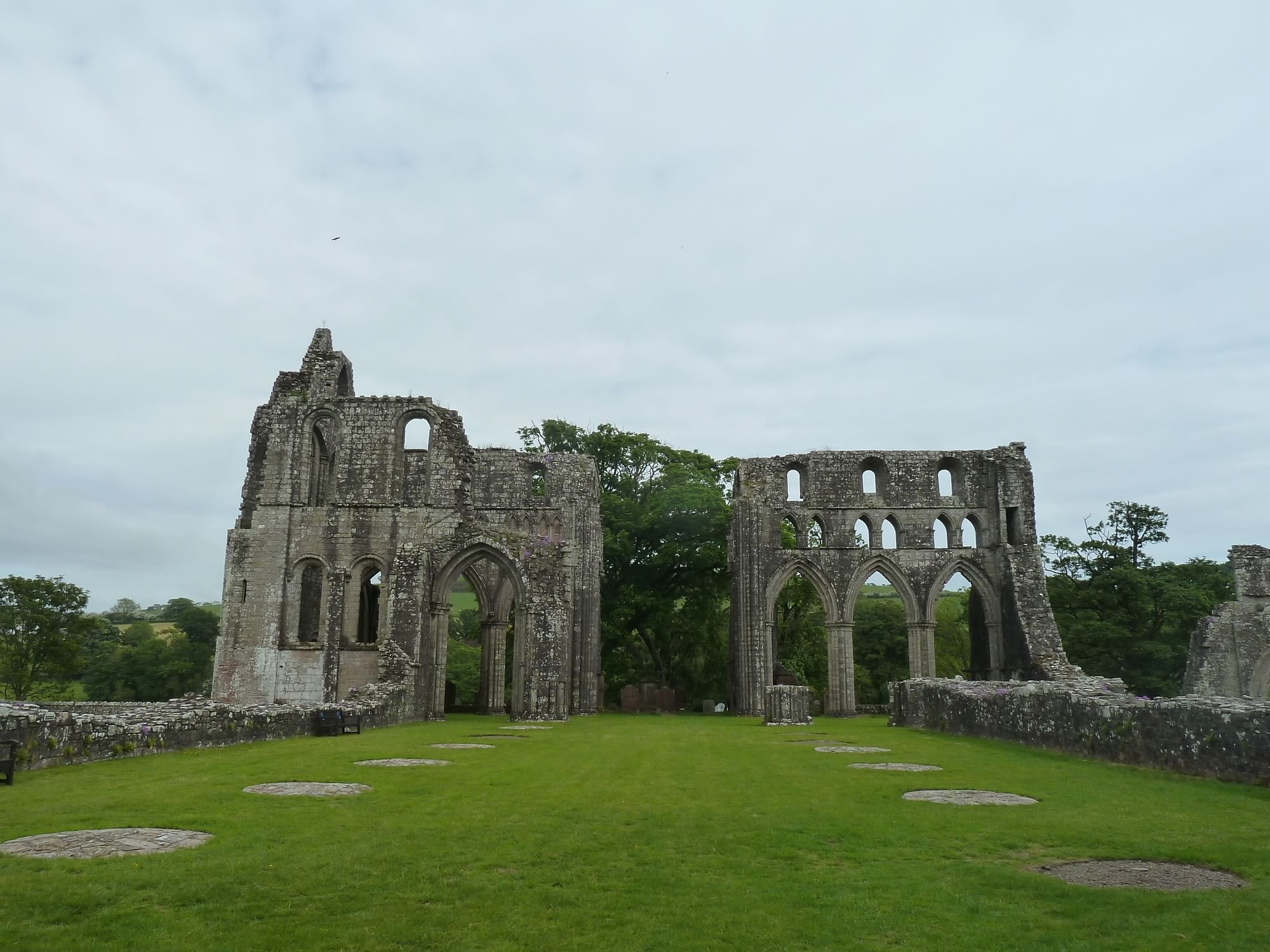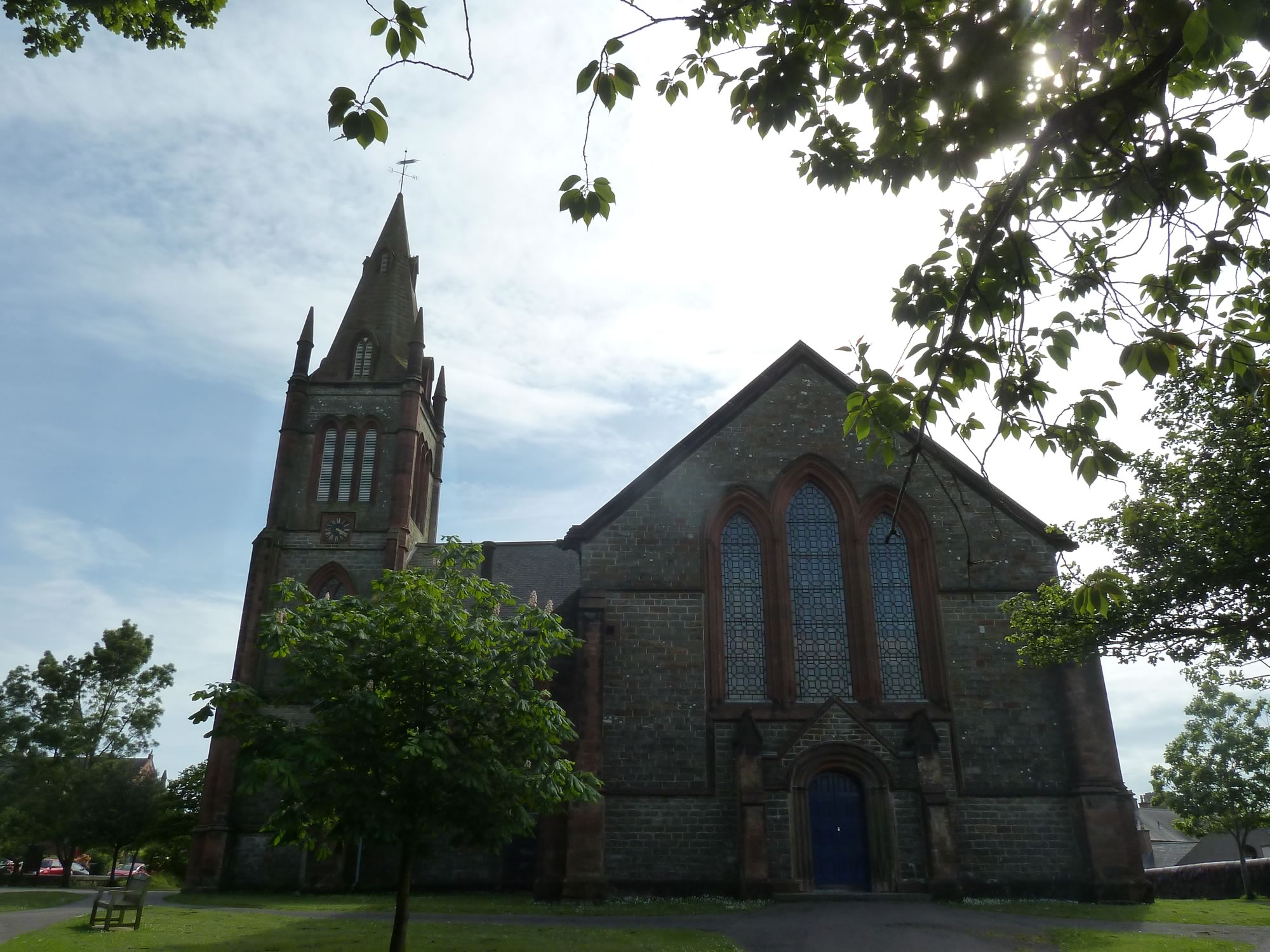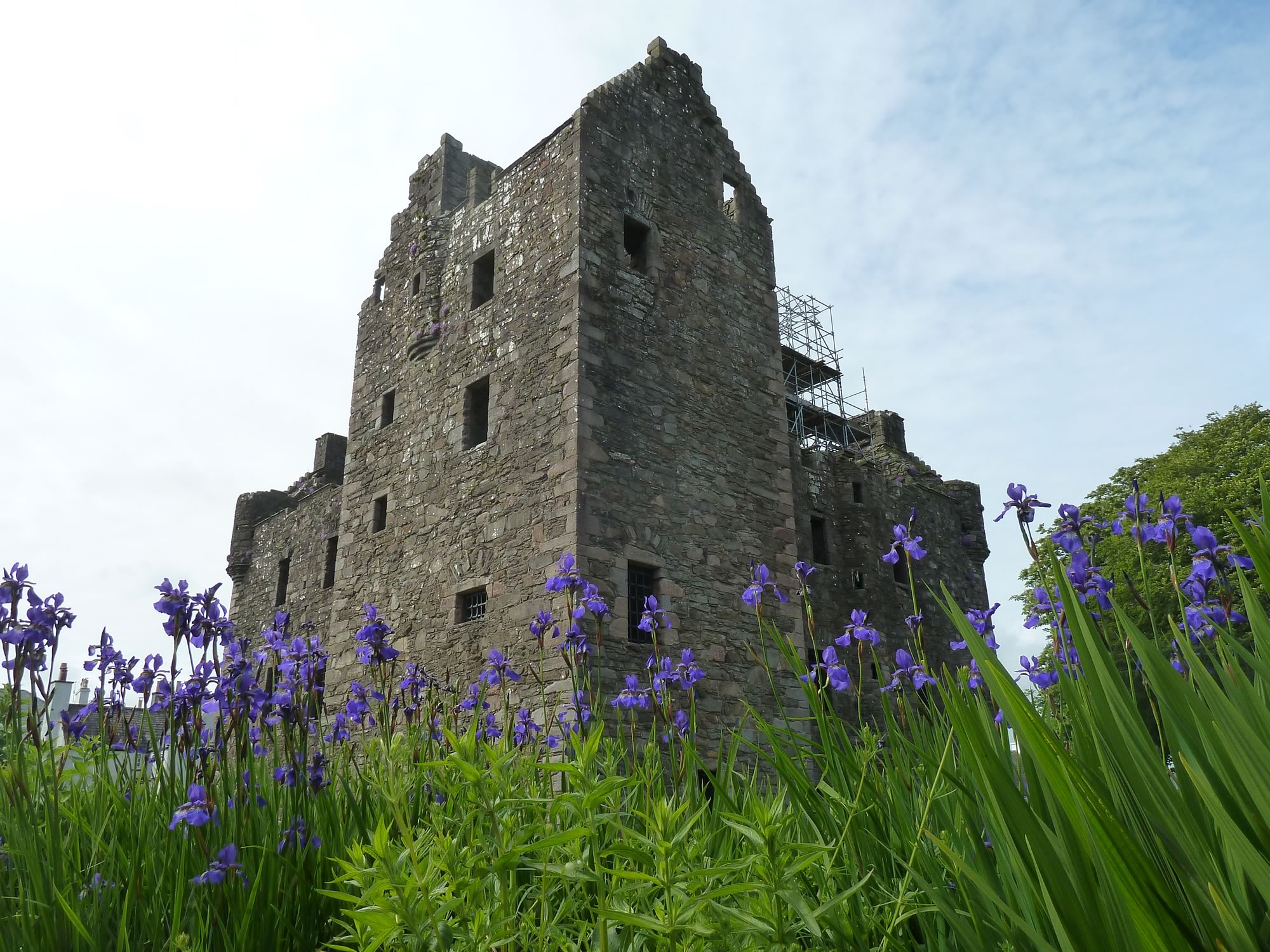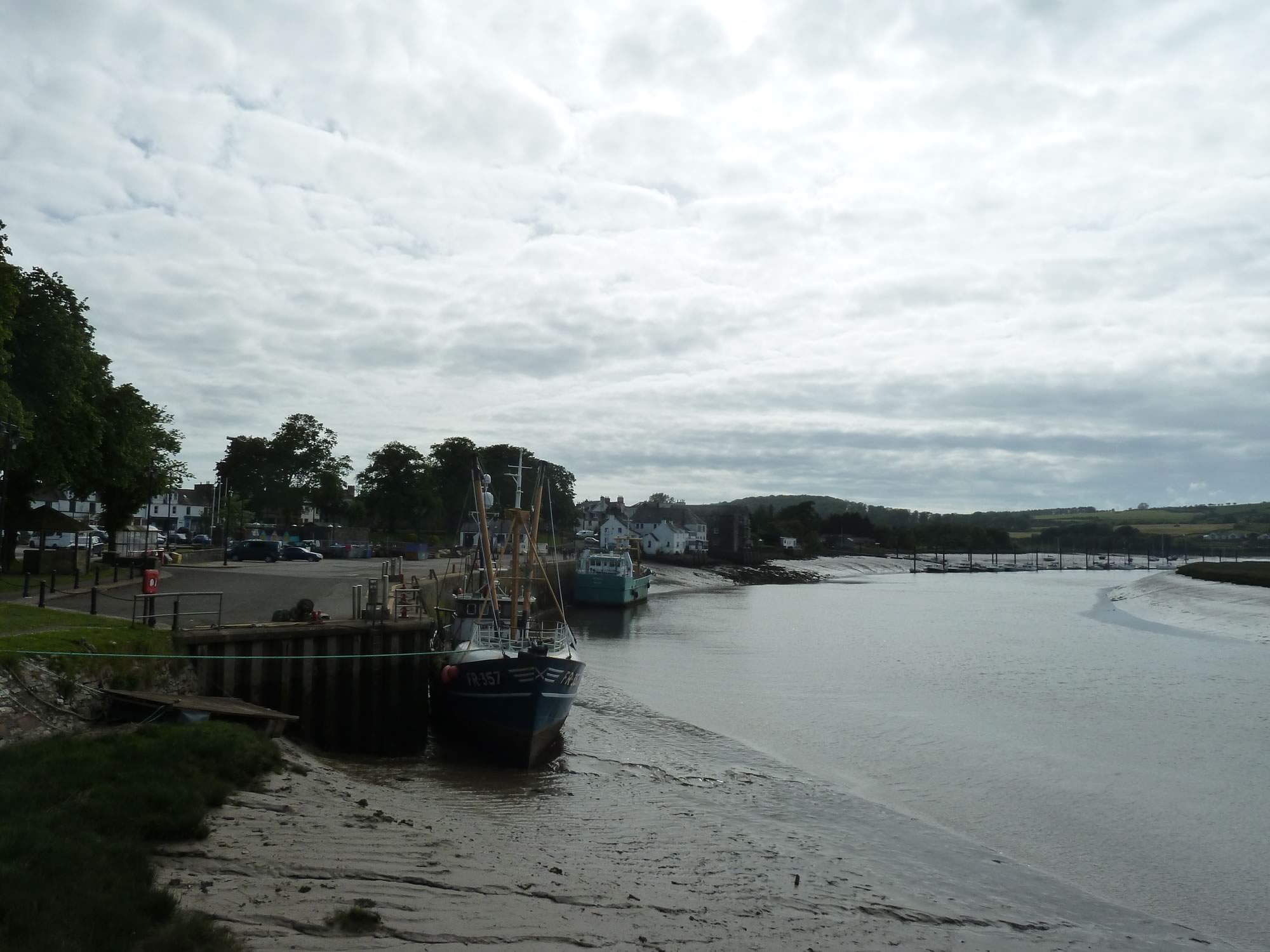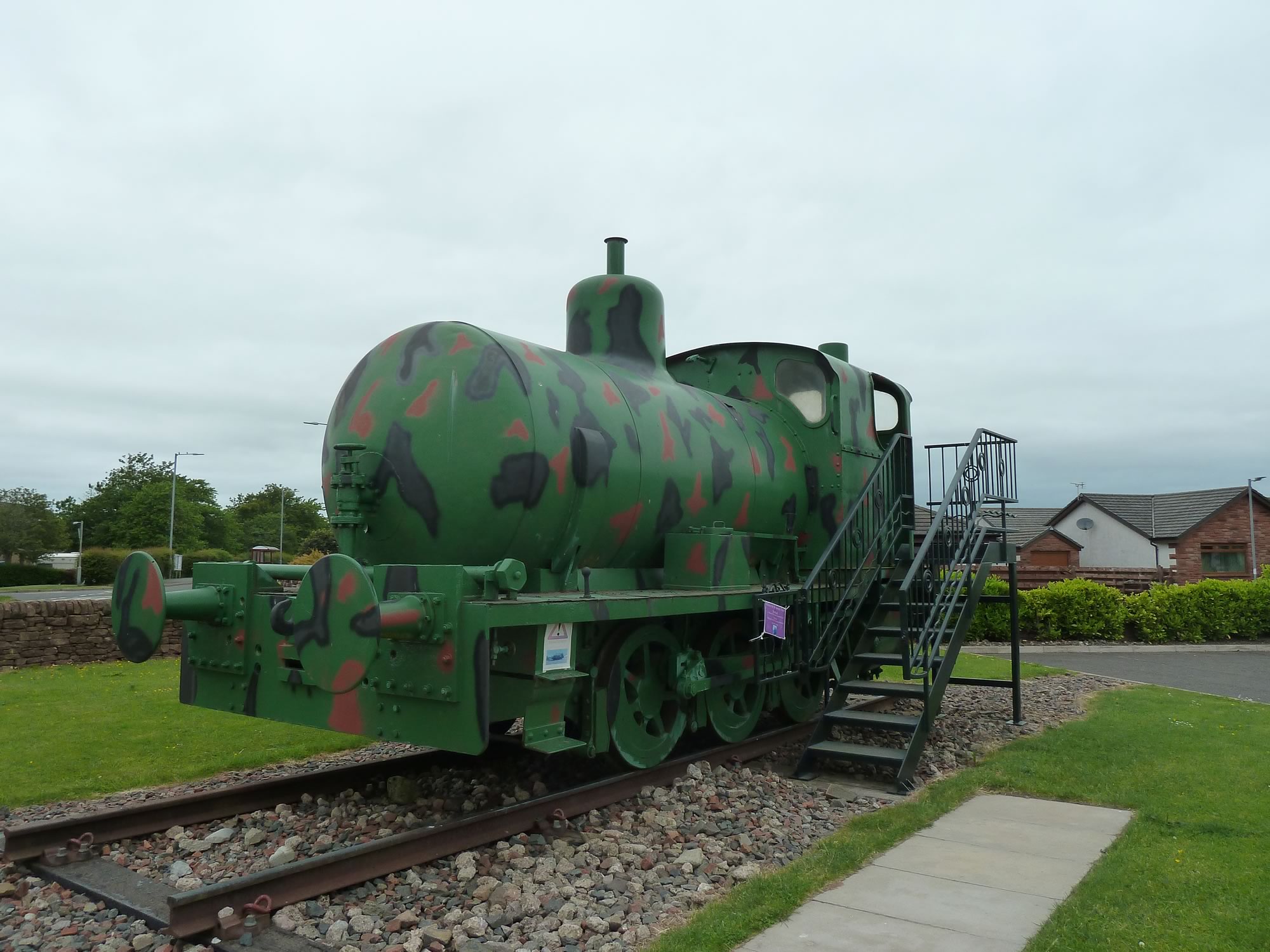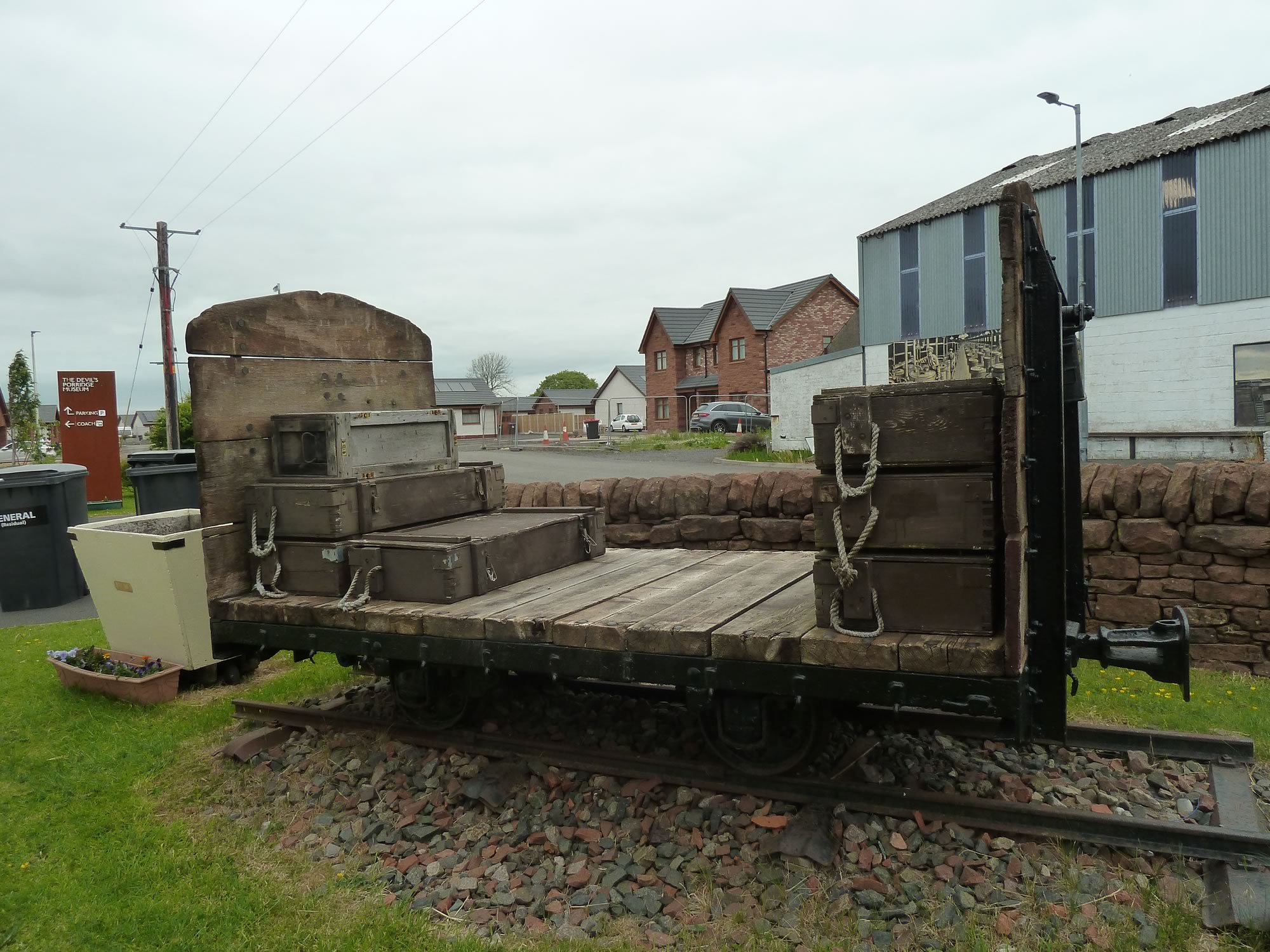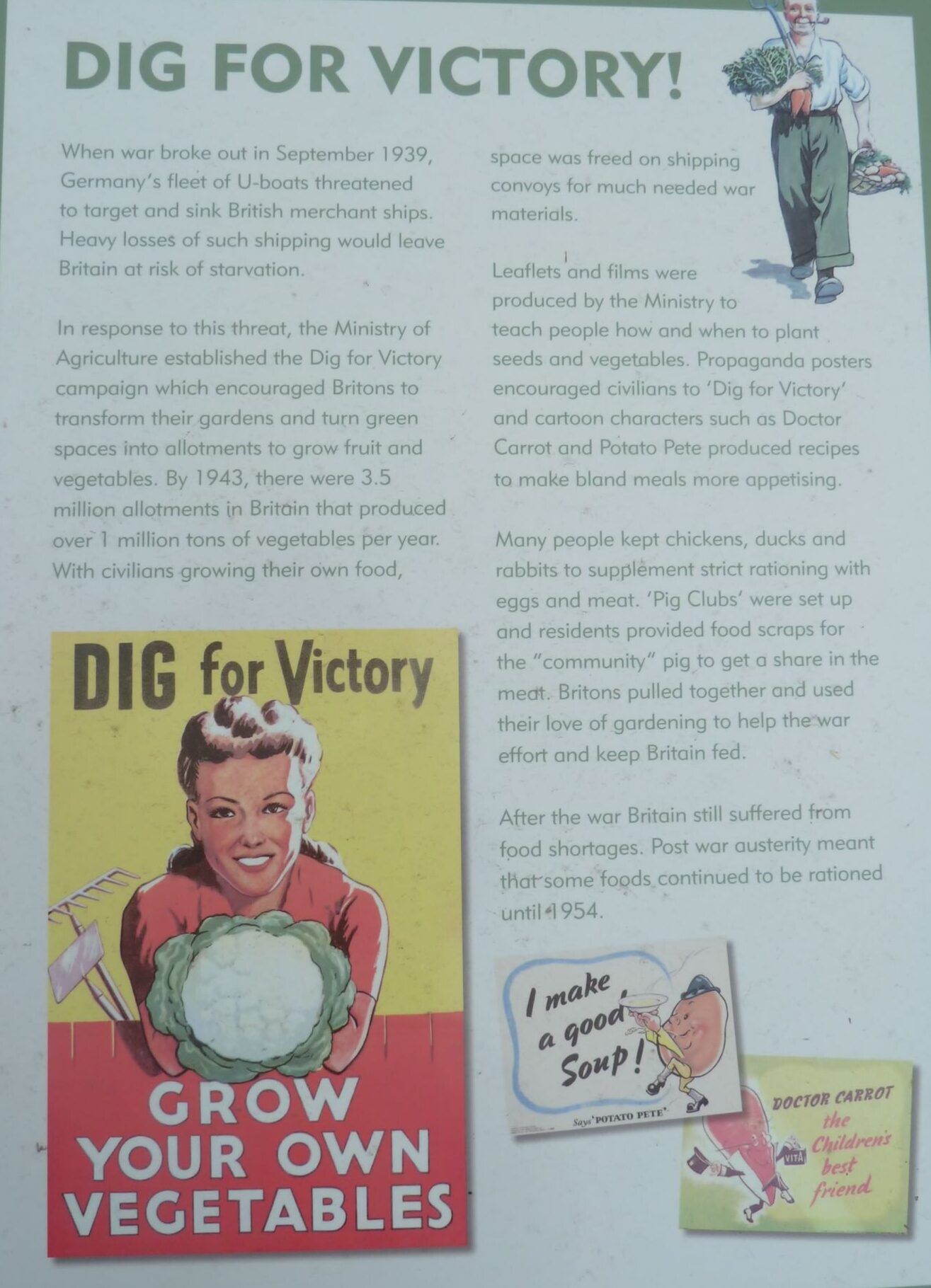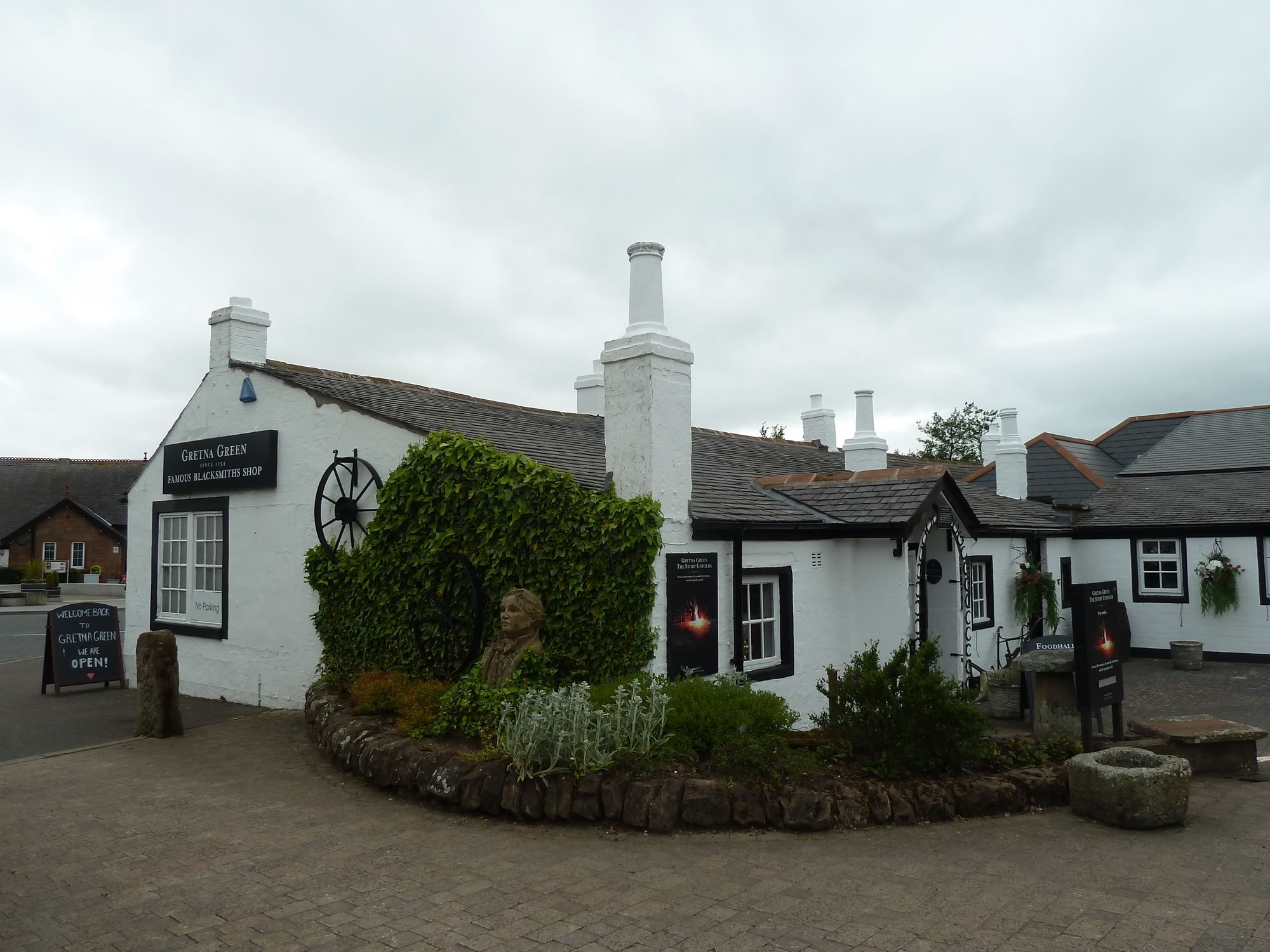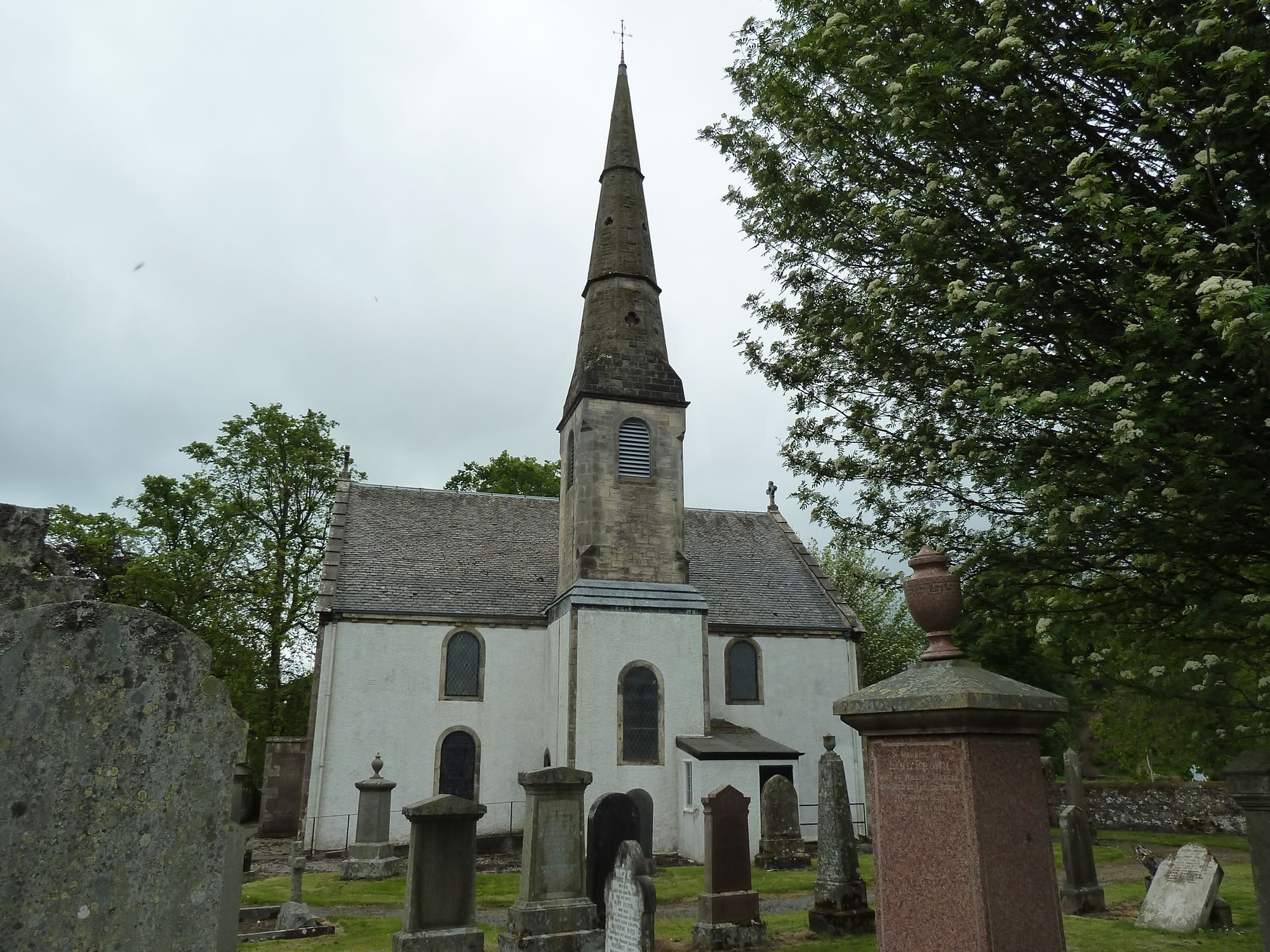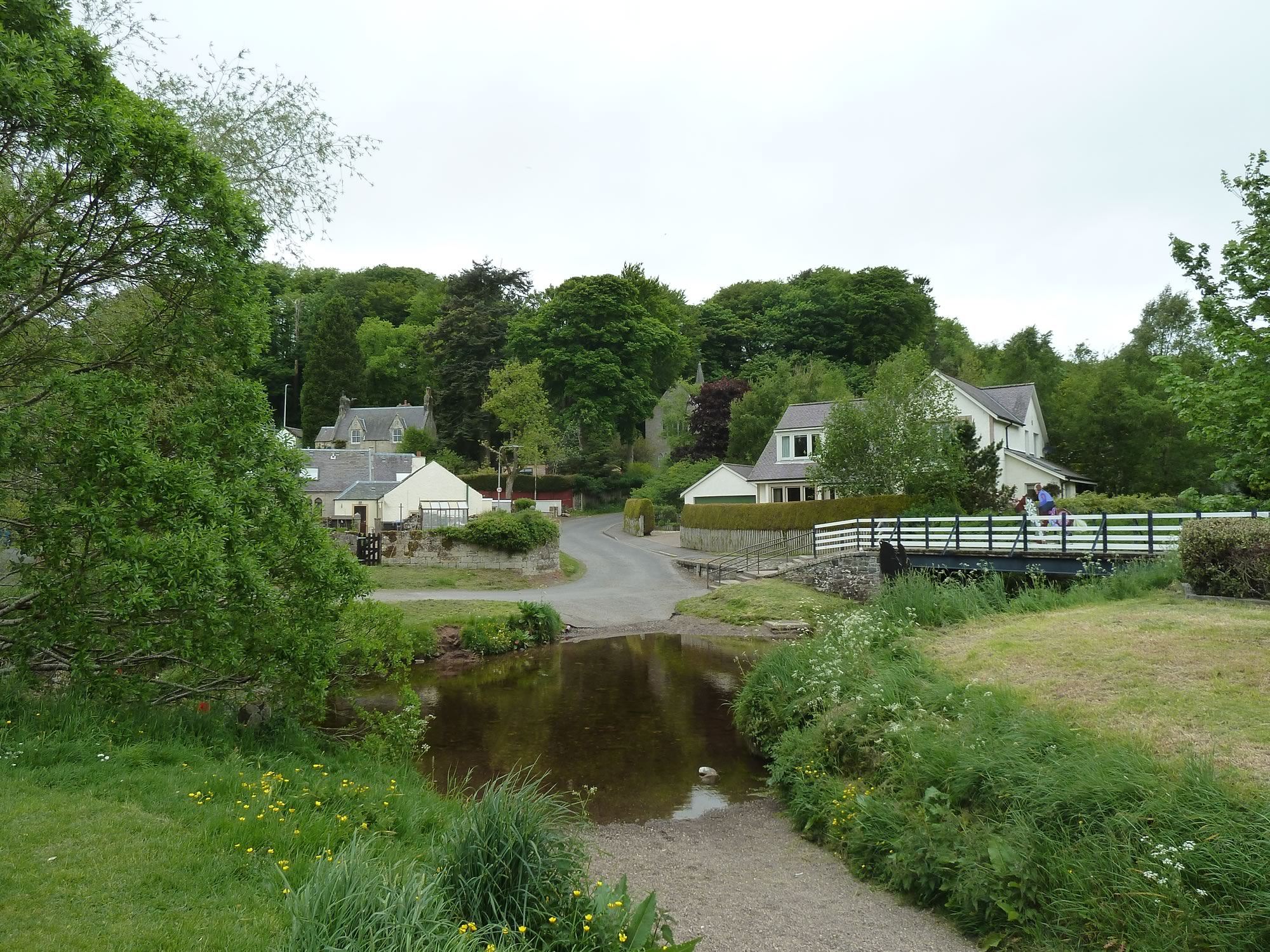Annan, our base in Dumfries & Galloway. Pictured in the photo above and marked on the map below.
As a break from our hillwalking trips, we went for a lazy 2-night visit to Dumfries & Galloway.
Arriving in Dumfries & Galloway
Simon had found a quaint hotel in Annan, a small town on the Solway Firth. We arrived a few hours before check-in time, so we went for a stroll on the immense estuary.
On the other side of the water, half-hidden by the haze, was England.
From there we drove to the Caerlaverock Wetland Centre, a bird paradise. As we walked in, we spotted this pair of swans with their not-very-ugly duckling.
By 2pm the cloud had lifted and the temperature was gorgeous. We walked along the trails, saw a heron, various ducks and other birds we weren’t too sure of.
There were only a handful of visitors, all keen bird-watchers, we suspected. We had a look at the Peter Scott observatory.
Sir Peter was the son of Robert Falcon Scott, the Antarctic explorer.
Annan was bathed in a glorious evening light when we arrived.
We checked in at the hotel, the building with the large chimney stack. We left our bags in the room and went for a walk.
With a population of under 9,000, Annan has a surprising number of imposing buildings for its size; remnants of a prosperous past.
Annan has been inhabited since Roman times, and takes its name from the river that runs through it.
After dinner we went for a walk along one of the paths next to the river. It was an idyllic place, but even on a fine evening like this the town seemed to go into hibernation after 6pm. Weird.
Day 2: off to Dumfries
The following day we drove to Dumfries. At the information centre we got tickets for the Dumfries Museum.
Because of the pandemic, you couldn’t just walk into a museum the way we used to do in our previous existence. You had to reserve everything in advance. Everything that was open, that is.
Visiting the Dumfries Museum was a fabulous idea. We saw exhibits of the regional fauna, archeological findings and historic documents. And we learned some curious facts, like this:
Dumfries, nicknamed the Queen of the South, has a population of nearly 50,000. In spite of its bridges, churches and mansions, Dumfries feels like a grim shadow of its former glory.
The Nith is the seventh longest river in Scotland, at least at low tide when the sea recedes in Solway and its length is extended by eight miles (13 Km).
Robert Burns, the National Bard, moved to Dumfries in 1791 and died here five years later, aged only 37.
We seem to bump into him in half of our trips.
Next we headed for New Abbey, a hamlet eight miles south of Dumfries.
These are the ruins of the 13th century Cistercian abbey called “Sweetheart Abbey”. Alas, it was closed, apparently due to dangerous scaffolding. Go figure.
So, instead, we visited the hamlet and took a few pictures.
Our next stop was Rockcliffe, an even smaller hamlet nestled around this cove. We sat on a bench by the rocks and had lunch.
When we got to Dundrennan Abbey, the guide was closing the gates. He must have noticed the disappointment on my face because, before I could utter a plea for a snap, he opened the gate and let me step in a couple of feet.
The three of us then talked for a while about the quiet months we’d had and what the future would bring.
I couldn’t help thinking how cruel those eighteen months of on-and-off lockdown have been for us, chatty souls.
From the abbey we drove to Kirkcudbright, which means “chapel of Cuthbert” in Gaelic. Kirkcudbright, pronounced /kərˈkuːbri/, has been a Royal Burgh since 1455 and is today known as “the Artists’ Town”.
This is St Cuthbert’s Parish Church.
One of the many interesting buildings in Kirkcudbright is MacLellan’s Castle. Like the New Abbey a few hours earlier, it too was closed.
Scaffolding seems to be the new boogeyman.
We walked around Kirkcudbright and admired the pretty multicolour façades of the artist’s houses. Then we went to the harbour to take pictures of the boats.
Day 3: the Devil’s Porridge
On Wednesday, our last day, we said goodbye to Annan and went to the Devil’s Porridge Museum. It was a fascinating visit. The museum tells the story of H.M. Factory in Gretna, which was the United Kingdom’s largest cordite factory in WW1.
“Devil’s Porridge” is the name given by Sir Arthur Conan Doyle to the explosive concocted in the factory.
This cute guy, Sir James, was the fireless locomotive that transported the explosive.
On one side of the museum there was a vegetable garden with this interesting war-time poster:
We left the museum and paid a short visit to a wee place with a curious history: Gretna Green. The information board just outside this building said:
“In 1754, after England banned couples under 21 from marrying without parental permission, love-struck runaways raced north to cross the border with Scotland to get wed over the anvil inside our Famous Blacksmiths Shop.”
England is only 2 miles away.
On our way back to Edinburgh we stopped briefly in West Linton.
This would be our last lazy holiday for a while.
The plan for our next adventure was to head for the Highland glens.
I took all the photos with the Panasonic.
